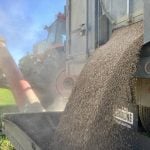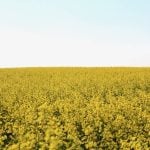Cereal seeds from 2010 on a typical blotter might look good to the naked eye, but look closely, says Kevin Zaychuk, business development manager for 20/20 Labs in Edmonton.
Zaychuk told the Agronomy Update Conference in Lethbridge last month that a blotter of germinating seeds “looks good if you are not a seed analyst.”
He said frost frost caused damage in all regions except the banana belt in southern Alberta in 2010. The biggest thing one sees with frost is damage to the seedling, including some secondary infection, he said.
Read Also

Hail research hopes to benefit potato growers
Alberta research scientist measures hail storm and heat dome affects on potato crops
Oats are hit even harder. “Trying to buy oat seed will be difficult because there is very little around this year. Oats got the brunt of the frost damage. If you have got oats, hang on. They are worth their weight in gold.”
This year, seed infection, especially with seed-borne pathogens, is also a concern. Zaychuk said germination might look good, but there are lot of issues, especially a lot of primary infection. Secondary infection is also possible as it can move seed to seed.
“Seed-borne pathogens are definitely affecting seed for 2011,” he said. Seed customers should look at seed further to more fully assess damage from diseases. Even look at individual seeds. Any seed put into bins under high-moisture conditions could be harmed.
Farmers must also realize that some disease can be waiting in the stubble. “It is important to have good seed to protect it,” he said.














